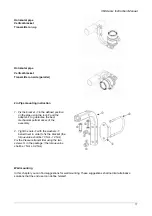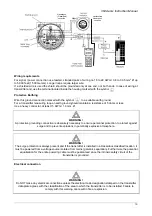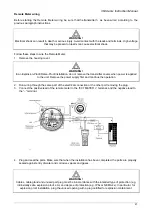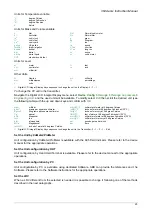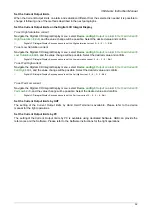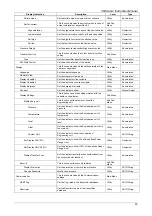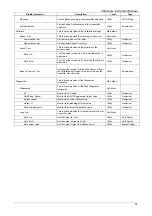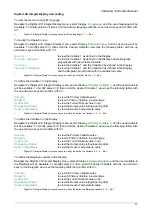
364Ax-Gx Instruction Manual
22
5. Install and thighten the housing cover, turn it to seat O-ring into the housing and then continue to hand
tighten until the cover contacts the housing metal-to-metal. In Ex-d (Explosion Proof) installation, lock the
cover rotation by turning the set nut (use the 3 mm Allen key supplied with the instrument).
For further information find the rel evant instruction manuals searching for t he keyword “IM/*36* ” on
or from local ABB representatives.
Check the installation
Before applying power and pressure, perform the following checks.
√
Check
Installation environment conforms to the transmitter specification for ambient conditions
The transmitter is mounted securely
The transmitter is properly grounded
The input power voltage matches the transmitter nominal input voltage
The plugs/vents and process connections are tightened as specified
The proper electrical adapter are installed and are tightened as specified
The red plug on the electical input not used is replaced with a proper plug
The cover is tightened up to metal to metal contact with the housing
All the requirements are satisfied if the transmitter is working in hazardous area
Apply power
The transmitter will start up automatically at the power up.
If, when using "intrinsically safe" transmitters, an ammeter is connected to the output circuit or a modem is
connected in parallel when an explosion hazard is present, the sums of the capacitance and inductance of all
circuits, including transmitter (see EC type examination certificate) must be equal to or smaller than the
permissible capacitance and inductance of the intrinsically safe signal circuit (see E C type exami nation
certificate for the po wer supply). Only passive or explosi on-protected devices or i ndicators may be
connected.
If the output signal stabilizes only slowly, a large damping time constant was likely set in the transmitter.
Start up
The transmitter h as default parameter settings that are sufficient for ma ny situations and start up of th e
instrument. However, review the configuration chapter for the default parameter settings values and th e
parameter changes procedures.










